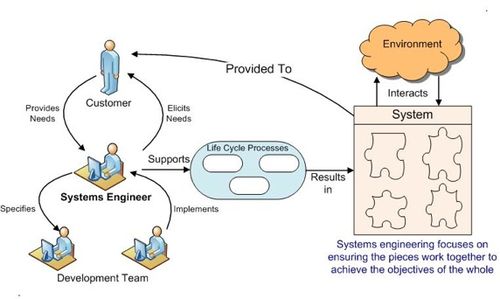Introduction to Systems Engineering
The primary focus of the SEBoK is on the current baseline of knowledge describing the practice of domain independent systems engineering (SE). This Knowledge Area (KA) contains topic articles which provide an overview of SE practice and discuss its economic value, historic evolution and key relationships.
Topics
Each part of the SEBoK is divided into KAs, which are groupings of information with a related theme. The KAs, in turn, are divided into topics. This KA contains the following topics:
- Systems Engineering Overview
- Economic Value of Systems Engineering
- Systems Engineering: Historic and Future Challenges
- Systems Engineering and Other Disciplines
Systems Engineering
SE is a transdisciplinary approach and means to enable the realization of successful systems. Successful systems must satisfy the needs of their customers, users and other stakeholders. Some key elements of systems engineering are highlighted in Figure 1 and include:
- The principles and concepts that characterize a system, where a system is an interacting combination of system elements that accomplish a defined objective(s). The system interacts with its environment, which may include other systems, users, and the natural environment. The system elements that compose the system may include hardware, software, firmware, people, information, techniques, facilities, services, and other support elements.
- A systems engineer is a person or role who supports this transdisciplinary approach. In particular, the systems engineer often serves to elicit and translate customer needs into specifications that can be realized by the system development team.
- In order to help realize successful systems, the systems engineer supports a set of life cycle processes beginning early in conceptual design and continuing throughout the life cycle of the system through its manufacture, deployment, use and disposal. The systems engineer must analyze, specify, design, and verify the system to ensure that its functional, interface, performance, physical, and other quality characteristics, and cost are balanced to meet the needs of the system stakeholders.
- A systems engineer helps ensure the elements of the system fit together to accomplish the objectives of the whole, and ultimately satisfy the needs of the customers and other stakeholders who will acquire and use the system.
References
None.
